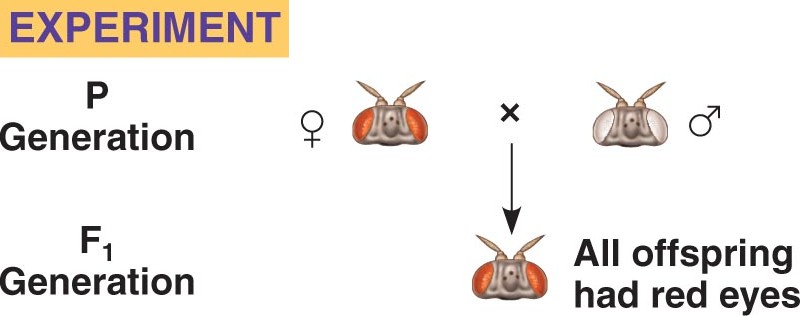- Chromosome alterations matching
-
 Trisomy 21 is the result of ________ during meiosis.
Trisomy 21 is the result of ________ during meiosis.
- The Barr body in humans is a consequence of
- In recessive X-linked diseases, the most likely scenario is:
- Human somatic cells have ________ pairs of homologous ________.
-
 In the experiment of the X-linked eye color trait at right, the expected F2 phenotype ratio is
In the experiment of the X-linked eye color trait at right, the expected F2 phenotype ratio is
- Nondisjunction can occur when ________ fail to separate during meiosis II.